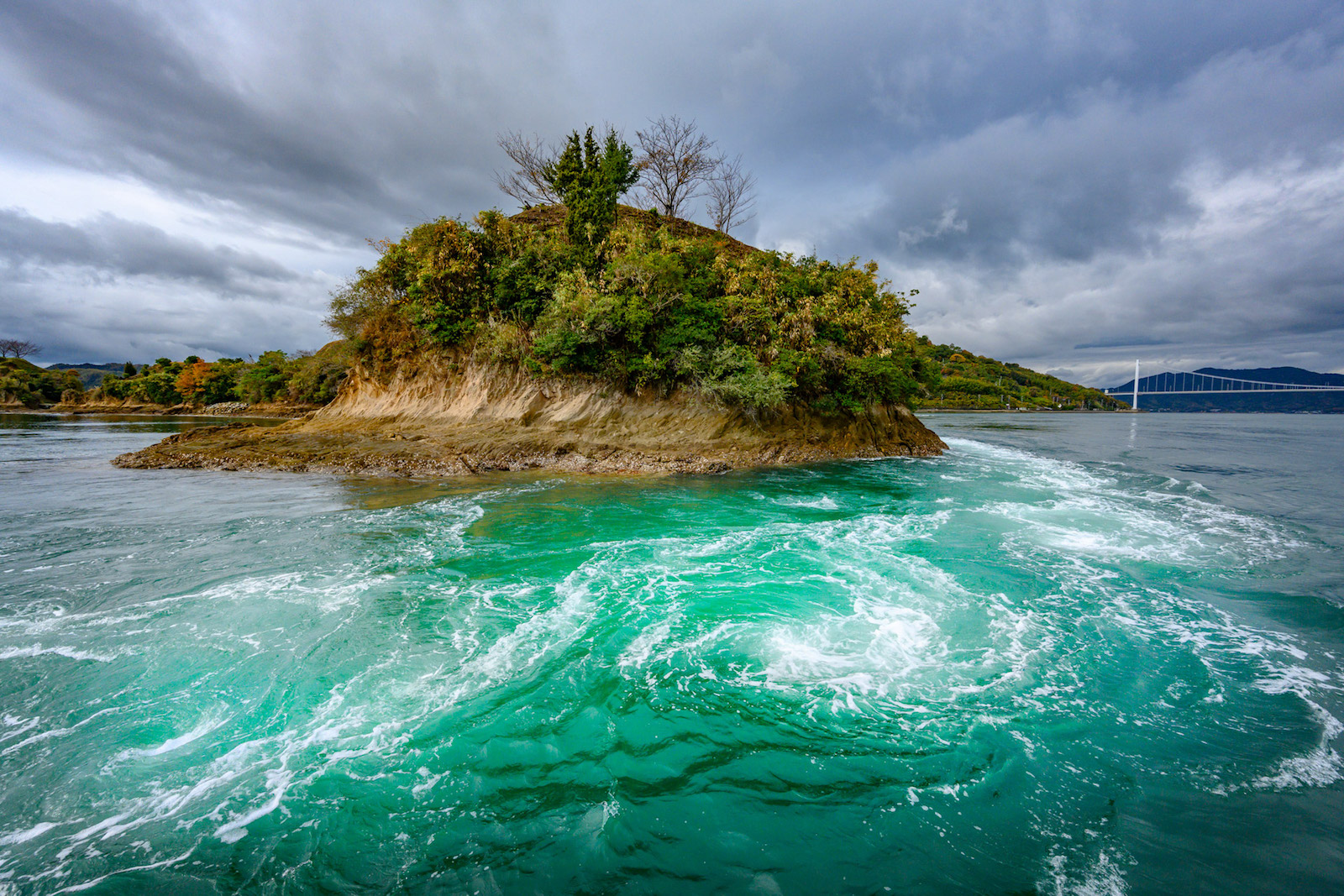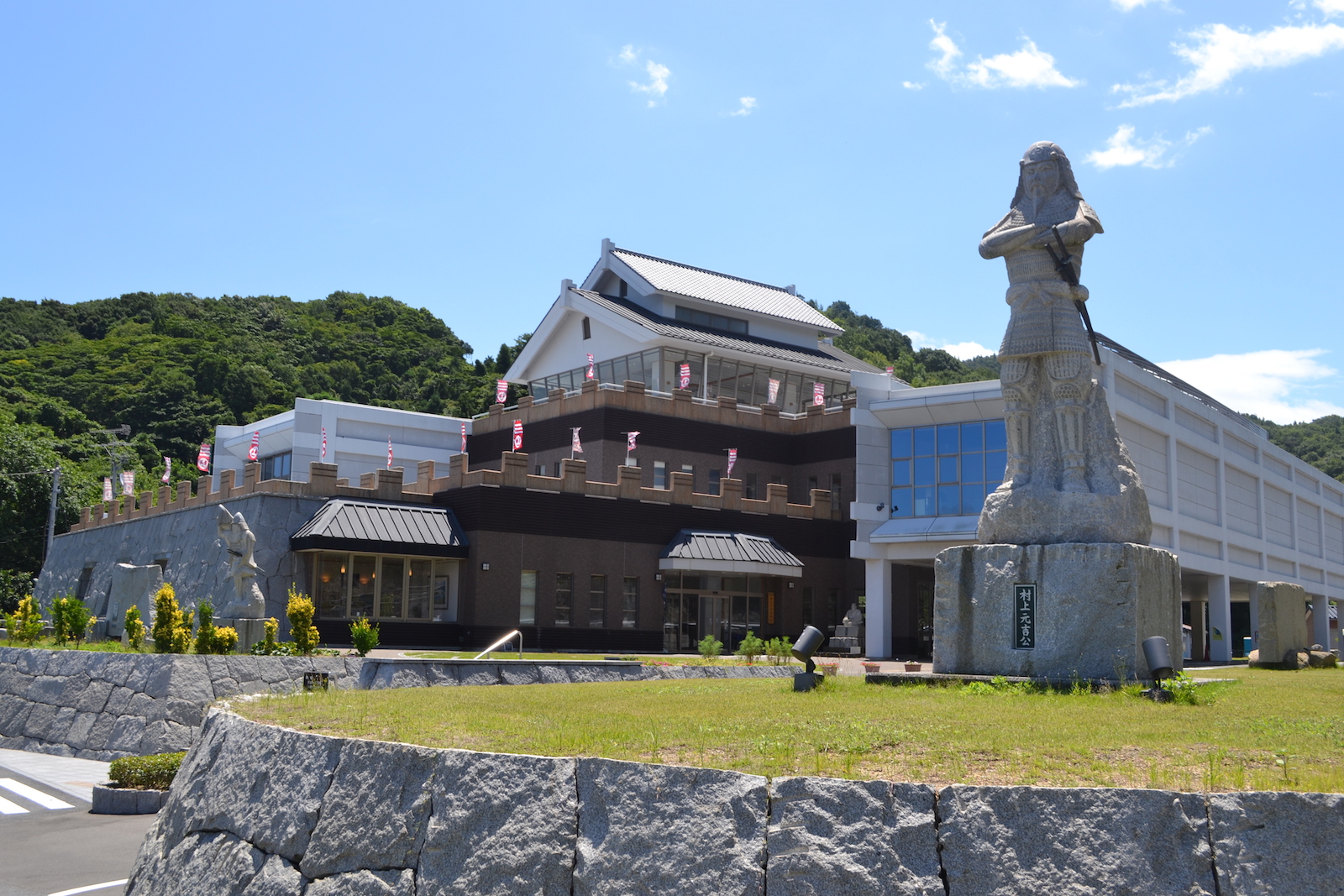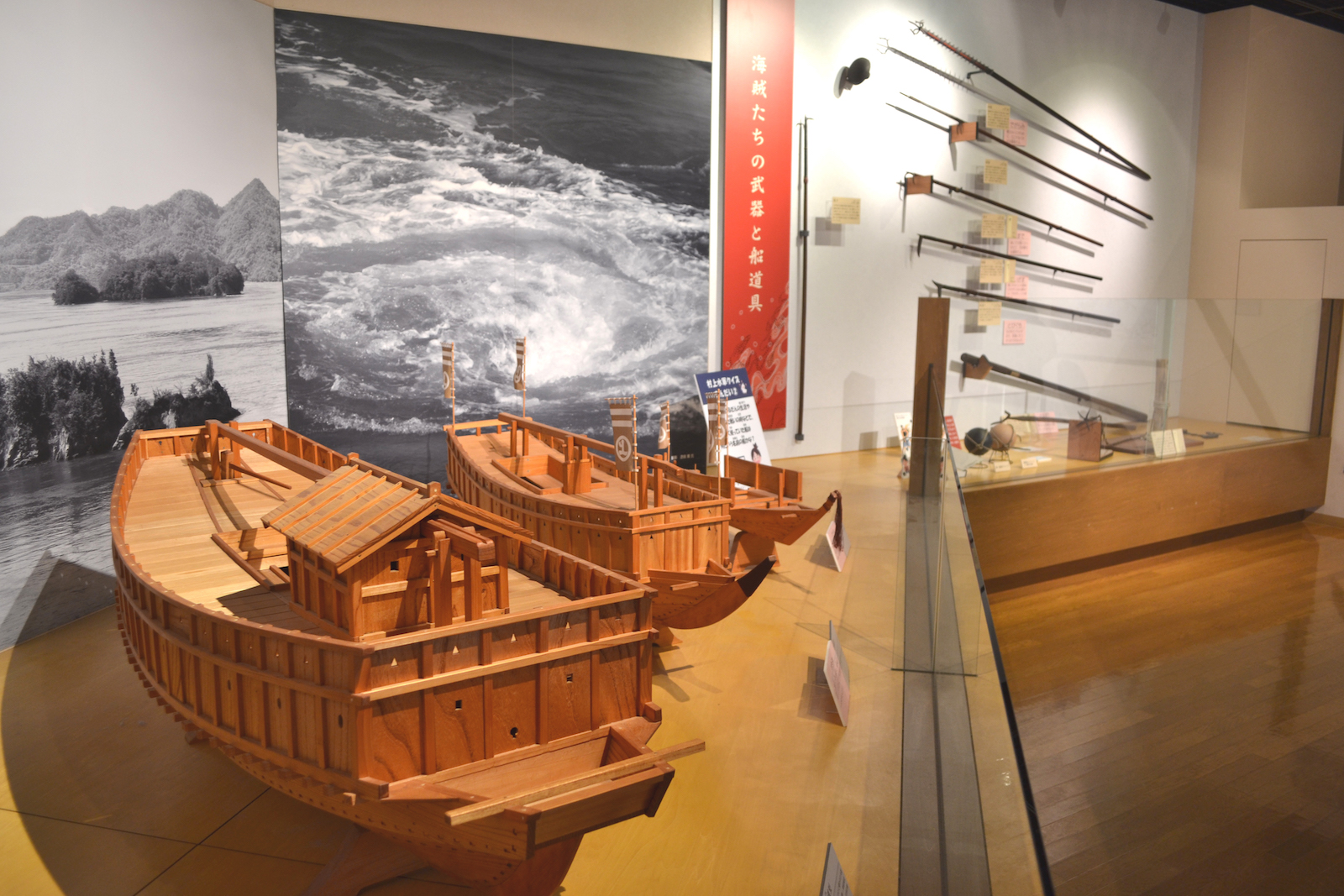Japan’s Seto Inland Sea is the body of water that separates the island of Shikoku from the island of Honshu. It is dotted with hundreds of smaller islands, rendering it extremely picturesque. It is also steeped in history.
Among the most interesting histories of the Seto Inland Sea is the phenomenon of the Murakami Kaizoku. Kaizoku, which literally means “sea tribe”, is usually translated as “pirates.” The Murakami Kaizoku were a sea-faring group that formed in the early 14th century and dominated crucial waterways of the Seto Inland Sea for more than two centuries.
The Murakami Kaizoku was comprised of three branches of a family named Murakami, each branch living in a different part of the Geiyo Islands, a series of large and small islands at one of the narrowest points of the Seto Inland Sea. Often only a few hundred meters of water separates the islands, so that they are like stepping stones between Imabari on Shikoku and Onomichi on Honshu.
Indeed, in our modern times, a highway known as the Shimanami Kaido runs from Onomichi to Imabari using a series of bridges completed in 1999 to connect everything. But historically, the particularly strong currents created by the running tide in the narrow sea passages made these waters extremely difficult to navigate.

As inhabitants of the Geiyo Islands, the Murakami Kaizoku understood the treacherous tidal currents, enabling them to pilot ships for less experienced sailors (for a fee). Ships could not pass through the area without them.
The Murakami Kaizoku never acted as looting pirates, but rather fought off such pirates and, over time, became guardians of all shipping moving east to west in the Seto Inland Sea. By the time warlord Toyotomi Hideyoshi (1537-1598) outlawed piracy, the Murakami Kaizoku had morphed into the Murakami Suigun (navy), effectively becoming a government-sanctioned coast guard. Yet, as Murakami Kaizoku, they were so dominant for so long that their legacy can still be found today. It’s a legacy so well worth seeking out that it has received designation as Japan Heritage by Japan’s Agency for Cultural Affairs.

A good place to begin is at the Murakami Kaozoku Museum on the north side of Oshima Island. The exhibits at the museum provide an excellent introduction to the history of this unique group. There are various artifacts from their two centuries of history, including weapons and armor, tools, clothing, artworks and documents.

Particularly fascinating are the scale models of ships they sailed over the years. A large map of the Geiyo Islands is embedded in the floor in one section of the museum where large windows also provide expansive ocean views. Multilingual audio guides have recently been introduced to help overseas visitors (open Tuesday-Sunday, 9 a.m.-5 p.m.; adults 310 yen, students 160 yen).

On the opposite site of Oshima, near the Iki-iki Kan Michi no Eki, visitors can board a sightseeing boat to enjoy the striking scenery of the islands and experience those famous currents firsthand. The boat schedule varies based on the tides. There is a Japanese website with the timetable (http://www.imabari-shimanami.jp/kurushima/timetable.html) or get a Japanese-speaking friend to phone: 0898-25-7338. Visitors can also rent bicycles near the Michi no Eki to explore Oshima’s coastline and out-of-the way nooks and crannies.
Northwest of Oshima lies Omishima, the largest of the Geiyo Islands. A must-see destination on the west side of the island is Oyamazumi Shrine, an ancient shrine said to have been founded by Emperor Jimmu (660-585 BC), Japan’s first emperor. It is home to the guardian deities of the Murakami Kaizoku: gods of the sea, mountains and battle. The shrine grounds are densely forested, included a couple of camphor trees that are literally thousands of years old. Just south of the shrine are two museums well worth visiting (open daily, 8:30 a.m. – 5 p.m.; combined entry: 1,000 yen).
One is the shrine’s “Treasure House”, which houses the finest collection of traditional armor and weaponry in Japan. Fully 80% of historical armor designated as national treasures is here, including armor belonging to such historical figures as Minamoto Yoshitsune (1159-1189). The reason for this relates to the shrine’s popularity as a place where warriors prayed before going into battle. When the warriors were victorious they would return to the shrine and offer their armor and weapons to the gods.
Be sure to look for the petite suit of armor that once belonged to Tsuruhime. This is believed to be the only surviving example of women’s armor from this period. Tsuruhime was born in 1526 to the family who were the priests of Oyamazumi Shrine. When her brothers both died in battle and her father died of illness, she assumed the role of chief priest of the shrine at the tender age of 15. According to legend, she also led an army of Murakami Kaizoku against the enemy who had killed her brothers. In 1543 her lover also died in a battle with the same enemy and, in her grief, it is said she drowned herself. In the nearby harbor there is a statue of her sitting on a rock; at high tide she appears to be floating.
The second museum is the shrine’s Maritime Museum, with displays relating to the sea and sea-faring. There are even exhibits relating to the marine biology work of the Emperor Showa.

On Innoshima Island in the far north of the Geiyo Islands, Murakami Suigun Castle is a museum facility housed in a building and grounds that look like a 16th century castle, complete with furnished rooms and relics of the Murakami Kaizoku (open Friday through Wednesday, 9:30 a.m. to 5 p.m.; 310 yen). Perhaps more interesting for its authenticity are the stone statues of 500 rakan (arhats) overlooking the sea from the top of Mt Shirataki, the highest point on Innoshima. Carving rakan statues as an expression of religious piety was particularly popular in the 17th century and these statues are said to have been carved by an Innoshima native. Nearby are the ruins of Aoki Fort, one of the lookouts used by the Murakami Kaizoku to control traffic through the strait.
The unique legendary history of the Murakami Kaizoku provides visitors a completely different perspective on the Japan Heritage of the Geiyo Islands and the Seto Inland Sea.
This article is sponsored content from the Agency for Cultural Affairs.
© Japan Today Take our user survey and make your voice heard.
Take our user survey and make your voice heard.















3 Comments
Login to comment
Paul14
Thanks for this article. I will pay a visit sometime to these places as it sounds really interesting and beautiful.
Hung Nguyen
I quite enjoy reading this article. From the stories about the place, the people who made the place well known, and the exhibition of the cultural artefacts of the Murakami Kaizoku in the local museum, I would like to go there one day.